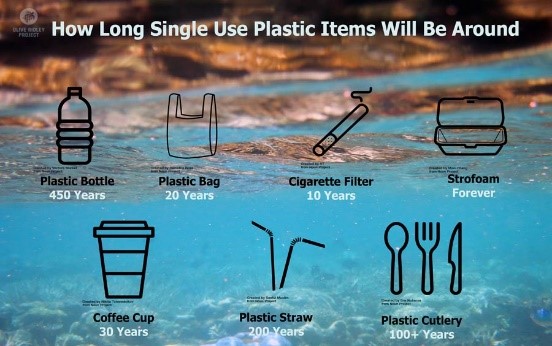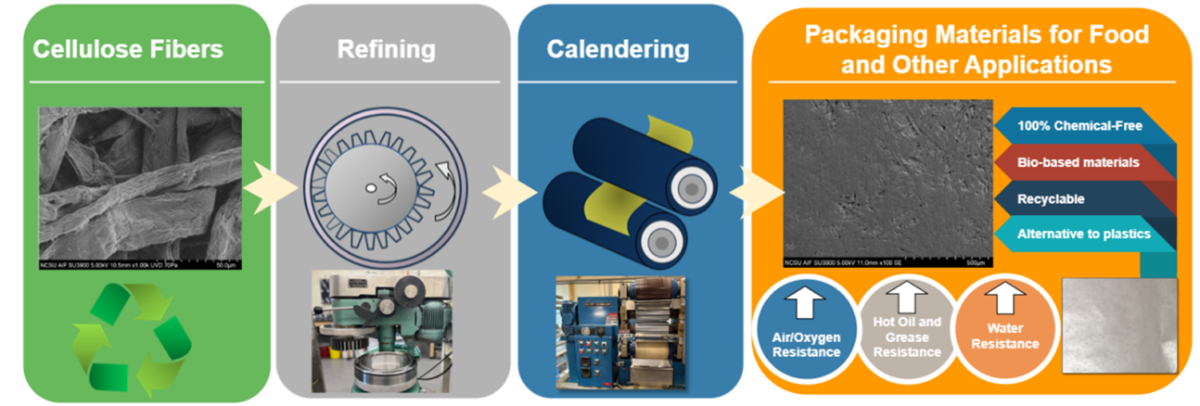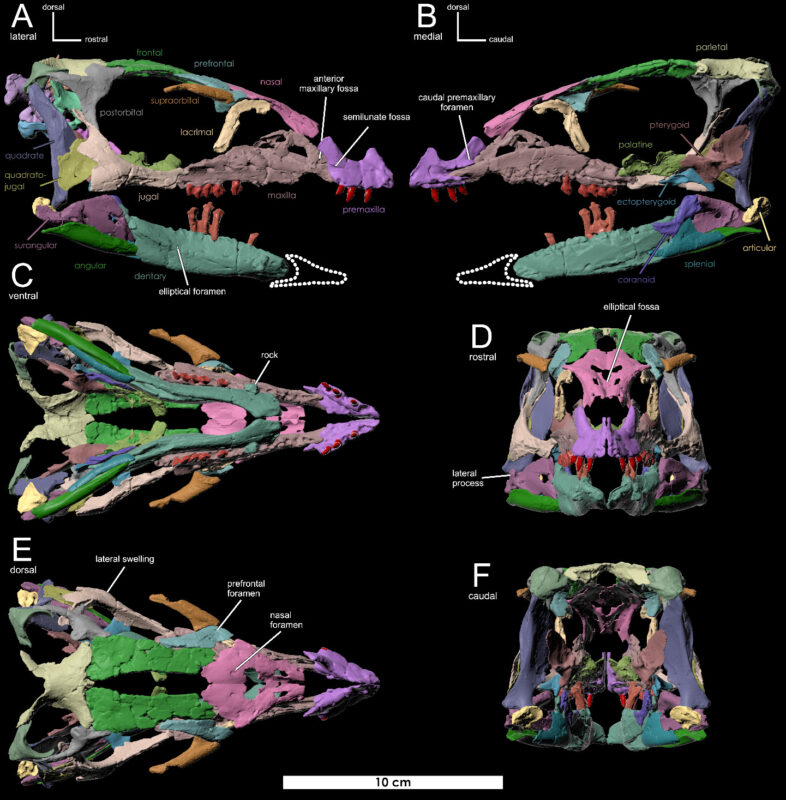Honoring Innovation and Impact: Congratulations to Our AIF Best Paper Award Winners!

We’re thrilled to announce the winners of the AIF Best Paper Award, honoring groundbreaking research that highlights the capabilities of AIF and enables us to fulfill our mission of reaching and assisting principal investigators and internal users.
Congratulations to both Haviv Avrahami and Aakash Upadhyay for their outstanding contributions! Both projects showcase a commitment to excellence and a passion for advancing knowledge within our community. We are excited to see how their research will shape the future.
- Haviv Avrahami’s paper, titled “A new semi-fossorial thescelosaurine dinosaur from the Cenomanian-age Mussentuchit Member of the Cedar Mountain Formation, Utah,” explores the discovery of Fona herzogae and its implications for dinosaur behavior and evolution. By integrating high-resolution 3D models of skeletal elements with evidence of fossorial behavior, this research provides new insights into how small-bodied early diverging ornithischians adapted to their environments and persisted through climatic and ecological challenges during the transition between the Early and Late Cretaceous.
- Aakash Upadhyay’s paper, titled “Harnessing Total Chemical-Free Paper and Packaging Materials Barrier Properties by Mechanical Modification of Cellulosic Fibers for Food Security and Environmental Sustainability,” explores multiscale refining of cellulose fibers combined with calendaring as a post-treatment. These techniques resulted in packaging materials with oil and grease resistance comparable to PFAS. The study provides insights into the performance of hardwood and softwood fibers as packaging materials when modified. The mechanical treatments induced high fibrillation, low porosity, increased tortuosity, and denser fiber networks. The results highlight the significant influence of refining and calendaring on the barrier properties of cellulose fibers, emphasizing their crucial role in determining the final attributes of paper-based food packaging materials and advancing our understanding of sustainable packaging developments.
An Interview with Aakash
What inspired you to explore this particular research topic?
Growing concerns over single-use plastic (SUP) pollution, especially in food packaging, which constitutes 50% of marine litter—have led to hazards like microplastic generation, impacting aquatic life and raising health and environmental issues. Regulatory restrictions on SUPs have shifted focus toward cellulosic fiber-based packaging. Previously, fluorochemical (PFAS) coated paper materials were used to compete with SUPs; however, the FDA has highlighted health risks of PFAS migration into food, leading to a ban on PFAS in packaging materials. This inspires us to develop competitive, renewable, chemical-free packaging materials to contribute to sustainable packaging solutions.

Can you share a key finding from your paper that you’re most proud of or excited about?
We have developed paper-based packaging materials exhibiting high oil and grease resistance, comparable to PFAS, while remaining competitive with SUP. Given the FDA’s concerns over the health risks associated with PFAS in food packaging and their subsequent ban, the findings can contribute to food security.
How do you envision your findings impacting your field or industry?
Our findings have the potential to significantly impact the paper packaging industry, which is substantial and growing—valued at approximately $348.08 billion in 2022 and projected to reach $488.64 billion by 2030. By demonstrating sustainable methods to enhance the barrier properties of paper without chemical additives, the study contributes to creating alternative PFAS coated packaging materials. The cellulose-based materials developed in our study exhibit high resistance to air/oxygen, moisture, and oil and grease. This approach envisioned cellulose to replace SUPs, contributing to technologically advanced sustainability goals in the industry through biocompatibility and recyclability.

How do you plan to build on this research in the future?
Building on this foundation, our future work will focus on reducing energy consumption in the production methodology through biomechanical treatment, aiming to develop materials with better functional barrier attributes. Subsequently, we plan to further improve the properties by incorporating bio-based coating solutions.

Our findings have the potential to significantly impact the paper packaging industry, which is substantial and growing—valued at approximately $348.08 billion in 2022 and projected to reach $488.64 billion by 2030.
– Aakash Upadhyay
Is there anyone in particular you’d like to acknowledge or thank for their support throughout your research?
I would like to express my sincere gratitude to AIF and its dedicated staff, especially Chuck Mooney and Jenny Forrester, for their suggestions in carrying out the characterization. I am also deeply grateful to my supervisor, Dr. Lokendra Pal, for his continuous guidance and support throughout the research. Lastly, I extend my thanks to the U.S. Department of Agriculture (USDA) for their financial support, as this work was funded through the intramural research program of the USDA, National Institute of Food and Agriculture, McIntire-Stennis, grant number NI21MSCFRXXXG043.
—
An Interview with Haviv
What inspired you to explore this particular research topic?
When I began my PhD, I aimed to focus my thesis on a modern approach to classical descriptive paleontology, a cornerstone of the field that typically lays the groundwork for exploring broader questions of ecology, biogeography, evolutionary rates, diversification, and morphological trends. Fortunately, around the time I joined NCSU, our paleontology team at the NC Museum of Natural Sciences began uncovering an extraordinary collection of small-bodied dinosaurs from rock layers deposited roughly 99 million years ago in Utah. I became deeply interested in these ancient creatures, and with the support of my research advisor, Dr. Lindsay Zanno, and the hard work of our lab’s fossil preparators, lab managers, and field volunteers, we collected a remarkable array of specimens that would eventually be named Fona herzogae.

Can you share a key finding from your paper that you’re most proud of or excited about?
We discovered that Fona represents a new species of herbivorous dinosaur that, despite living during the latter part of the Mesozoic era (age of dinosaurs), retained a primitive body plan—much like a “living fossil,” akin to the coelacanth of its time.
Our study also reevaluates the evolutionary relationships of rare North American dinosaurs known as thescelosaurs. Until now, the ancestry of the best-known member, Thescelosaurus, remained largely a mystery, with it appearing abruptly in the fossil record at the end of the Cretaceous. We have determined that Fona and another North American dinosaur, Oryctodromeus, are close relatives of Thescelosaurus, revealing that this lineage was a significant part of North American dinosaur ecosystems throughout the entire Late Cretaceous, spanning at least 30 million years.
Lastly—and perhaps most intriguingly—our findings suggest that Fona may have lived part of its life in subterranean burrows. Fossils of Fona are among the most abundant dinosaur remains in the Mussentuchit Member of the Cedar Mountain Formation. However, as a small-bodied dinosaur with relatively delicate bones, Fona would typically face low preservation odds due to factors like biological decay, mechanical wear, and predation—a challenge especially pronounced in the dynamic Mussentuchit ecosystem, where active waterways likely contributed to carcass disarticulation, scattering, and decomposition.
Despite these odds, Fona is not only exceptionally common, but its fossils are also remarkably well-preserved, often found in full or partial articulation with minimal damage or environmental modification. This extraordinary preservation, which defies typical taphonomic biases, is almost certainly due to Fona’s burrowing behavior. These burrows would have acted like protective tombs, shielding their remains and preserving their life story in the fossil record.
How do you envision your findings impacting your field or industry?
Fona will be a cornerstone in advancing our understanding of small-bodied early diverging ornithischians (SBEDOs). Our comprehensive documentation, featuring high-resolution annotated 3D models of each skeletal element, will support future researchers in conducting precise anatomical descriptions and well-informed comparative analyses of closely related dinosaurs. This work sets a new standard for anatomical studies, ensuring that subsequent discoveries can build upon a detailed and accessible digital foundation.
Additionally, the rocks that preserve Fona are crucial because they capture an ancient ecosystem that thrived just before the Cretaceous Thermal Maximum—a major global warming event that profoundly impacted life on Earth. Our team is investigating how this “super greenhouse” period affected the dinosaurian world, specifically identifying which dinosaurs went extinct and which adapted or flourished. To accomplish this, we first need to identify and understand the dinosaurs that existed immediately before and after the event, yet relatively little research has focused on this crucial time window.

Naming Fona as the newest species from the Mussentuchit Member is a significant step toward reconstructing this ancient ecosystem and understanding how climate change during the Cretaceous Thermal Maximum may have reshaped dinosaur evolution. Fona is especially important in this context because its burrowing behavior, which likely provided some protection from environmental extremes, offers unique insights. Evidence suggests that subterranean lifestyles may have given certain animals a survival advantage during extinction events. By identifying a dinosaur that exhibited this behavior just before a climate crisis, we add an essential piece to the puzzle of how ancient climate shifts influenced dinosaur survival and evolution.

To build on this research, I am currently investigating the variation in skeletal features among different individuals of Fona, analyzing their developmental growth patterns, and working to clarify the complex and poorly resolved evolutionary relationships within the family tree of small-bodied early diverging ornithischians. This ongoing work aims to deepen our understanding of both individual and species-level variation, as well as the broader evolutionary context of this diverse group.
Many people have been instrumental in making this study possible. I would especially like to thank the dedicated staff at the NC Museum of Natural Sciences, fossil preparators, field teams, and student volunteers who contributed countless hours to this project. I’m also deeply grateful to the granting agencies that supported our work, the staff at the AIF for their training on the Zeiss nano-CT scanner, and the multiple museum collections that generously facilitated research visits. This study would not have been possible without the collaborative efforts of all these individuals and institutions.
– Haviv Avrahami


- Categories: